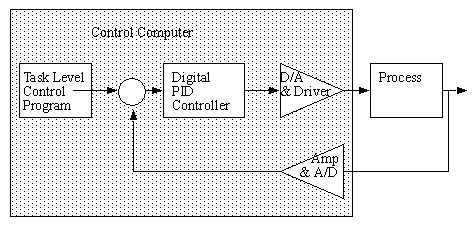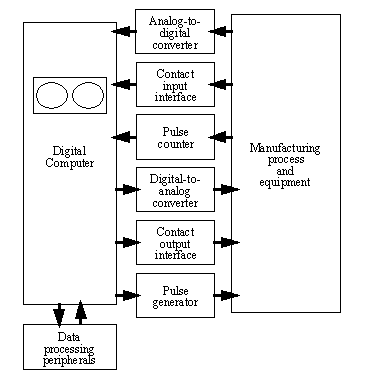1. COMPUTER CONTROL OF PROCESSES• Functions of a Process I/O Interface, - Control the scanning and processing of all the inputs and outputs between the process and the computer. - Provide conversions of signal levels, compensation for sensor range, and linearization of signals. - Provide signal and sensor validity checks. - Provide signal pre-processing and filtering. - Provide measurements to the various other programming packages which have been converted to engineering units or interpreted in other ways. - Provide alarm limit checks input-by-input. • Some features found in computer control systems, - timer initiated events - such as clock based sampling periods for a control loop - Process initiated interrupts - Prioritized interrupt signals can be used to alert computers to standard notifications, or to initiate an emergency sequence when a critical failure has occurred. - Control software - directs the operating points for the control system - System and program initiated events - these are for system house keeping, and for communication to other computer systems in a network. - Operator initiated events - requests for reports, changing of operating parameters, checking quality, etc. • Each computer has the ability to process interrupts. • These interrupts can stop the microprocessor, and make it execute other subroutines. • If no interrupts are received, the computer will always run the same program • When interrupts are received, they are processed as urgent, or non-urgent. • When an interrupt is processed, a small subroutine is run, and then execution returns to the original point in the interrupted program. • If interrupts are not used, then the computer must continuously scan all of its inputs to see if any are critical. But this is not practical for real time processing. • Linear Computer Controllers, • Linear control theory can be converted into computer programs. • Canonical form (Laplace/frequency domain) control rules can be converted into a form suitable for computers by using ‘z-transforms’ • State space control laws can be converted into computer code using matrix techniques, along with numerical integration. • For example the PID control law has been used in many computer control programs to date. • The figure below depicts a compute controlled process 
- Multi-input/Multi-output control systems • An example of Computer-process interface 
1.1 TEMPERTURE CONTROL1.2 BATCH PROCESSING1.3 COMPUTER PROCESS MONITORING1.4 IMPLEMENTING A COMPUTER CONTROL SYSTEM1.5 PRACTICE PROBLEMS |